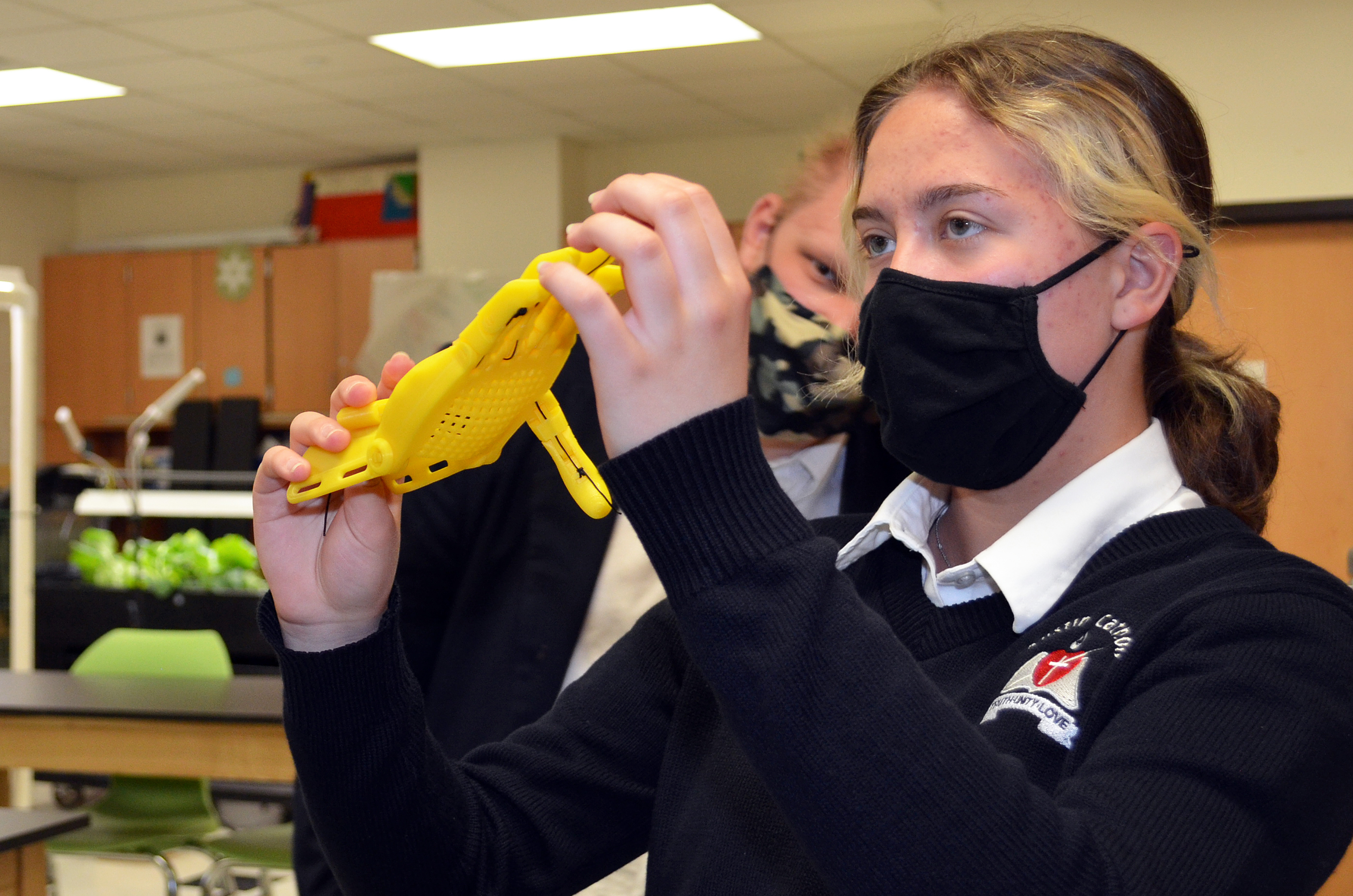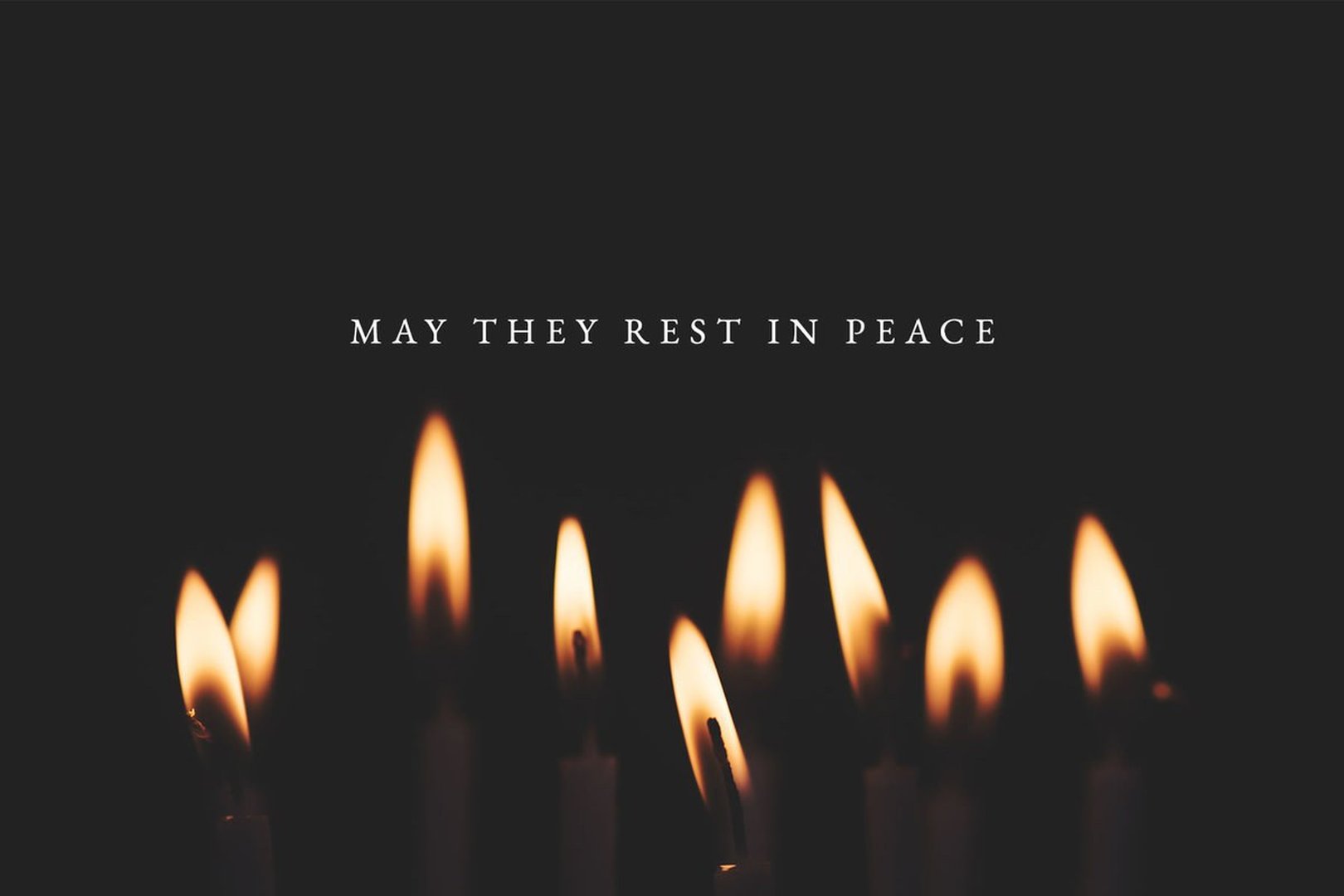Chesterfield Township Catholic students use technology, Christian faith to solve real-world problems: ‘We’re here to make a difference’
CHESTERFIELD TOWNSHIP — Students at Austin Catholic High School are lending a hand to their local community — literally.
“We are here to make a difference,” said Laura Hayden, STEAM (science, technology, engineering, art and math) coordinator at Austin. “We are taking a global problem to the local level.”
Students in Hayden’s class have been hard at work making prosthetic hands for amputees in the community using 3D printers — an innovative and cost-saving approach to a usually complex and expensive problem.
The students’ hope is that they will be able to create prosthetics for those in need in the area and through the global e-NABLE community, an organization that shares open-source designs for assistive devices.
“Our goal is to provide children with prosthetics,” said sophomore Austin Boettcher. And, as children grow, “we would continue to make them these prosthetics to use as an alternative to an expensive prosthetic.”

Students are using one of the two 3D printers donated by the Brecht family. Fr. David Brecht, OSA, was a graduate of the first class at Austin Prep in Detroit, where his brothers also attended; he later became the first headmaster at the current Austin Catholic until he died in 2014.
Students must follow a process through e-NABLE to be added to the project’s map of global volunteers. After a prosthetic is created and tested, students submit it for approval to the e-NABLE community for their chapter badge. Once approved, they will be able to connect with other e-NABLE communities all over the world.
“Then we will be able to reach out further to those in need,” said sophomore Alexis Jarvis.
Having acquired the 3D printer in January, Hayden’s class has come a long way. Making the prosthetic hand was possible through a collaboration with the University of Notre Dame STEM training program.
Juniors taking a STEAM class at Austin have also used the 3D printer to create water filters, made possible through the Clean Water Initiative, part of the United Nations’ sustainable development goals.

Nick Tessmer said after making the water filter, the class went even further and made its own charcoal out of wood, mixing it with gravel and sand to filter the water, “which helps kill the pathogens and makes water drinkable.”
He and his fellow classmates Brett Coppens and Lukas Bruni admitted it wasn’t a complete success, however. “We still have a lot of research to do to improve,” Tessmer said. “It’s a lot of trial and error.”
The students have no plans to give up. Their water filter project is a continuation of their global issue class from the first semester, which extended into the second semester by learning about global sustainable goals.
Using the 3D printer has been an evolving process for Hayden and her students.
“We were able to quickly learn,” Hayden said. There have been some failures, but far more successes. “It’s been amazing. We have been learning together. It’s a great teaching tool. It’s so exciting.”
Once the students achieve their e-NABLE chapter badge, the next step will be to get the word out to those in need through companies and hospitals. “We want to reach out to people who need it,” Hayden said.


It would take a few weeks to complete a prosthetic, after taking measurements and modifying it to fit the person, whether for a hand or for a missing finger. The printing and creation of the actual prosthetic takes three to four days, Jarvis said.
Although Austin students have been learning under a hybrid (both in-person and virtual class) model, students were eager to work on the project and were still able to meet in person in small groups, despite COVID-19.
Jarvis is grateful she signed up for the STEAM class knowing it will help her toward her degree in industrial design when she attends college. “This is a good basis for my future to get a better understanding of how it works,” she said.
Boettcher said he enjoys the class knowing that “we can make something that functions and see people benefit from it.”

Fellow student Philip Klatzke, whose goal is to earn a computer software degree in college, agreed. “I see how this will benefit others,” he said.
Initially, at the beginning of the semester, Aiden Bizze’s study hall was the same time as the STEAM class. He heard his brother, Frank, and his friends talking about the class and immediately switched over.
“When I heard about how much fun it was, I wanted to be a part of it,” he said. “Free-form engineering? Sign me up! No regrets.”
Seniors in the STEAM class chose to address world hunger, and are working on a hydroponics project using plants they hope to replant in a garden outside the school. Those within the community would be able to use the fresh vegetables as needed.

Taking it upon themselves, under Hayden’s supervision, students are raising money for the e-NABLE project through can collecting and grant writing with the help of their English teacher.
“When they made their prosthetic, there was so much excitement,” Hayden said. “They ran through the school to show off their hand to other teachers. They know how much they can make a difference in the community.
“The main goal of the STEAM innovation class is to learn and apply the engineering design process to solve a global problem as disciples of Christ,” Hayden said, “and to promote taking what we learned and to make a difference in the world and the community. When they leave here, they can take their STEM education and turn it into the common good.”
The goal is empowerment, she added. “It circles back to faith. We are disciples of Christ to make a difference in the community.”
e-NABLE 3D prosthetic printing
For more information on the project, or to donate cans, please email Laura Hayden at lhayden@austincatholichighschool.org.









